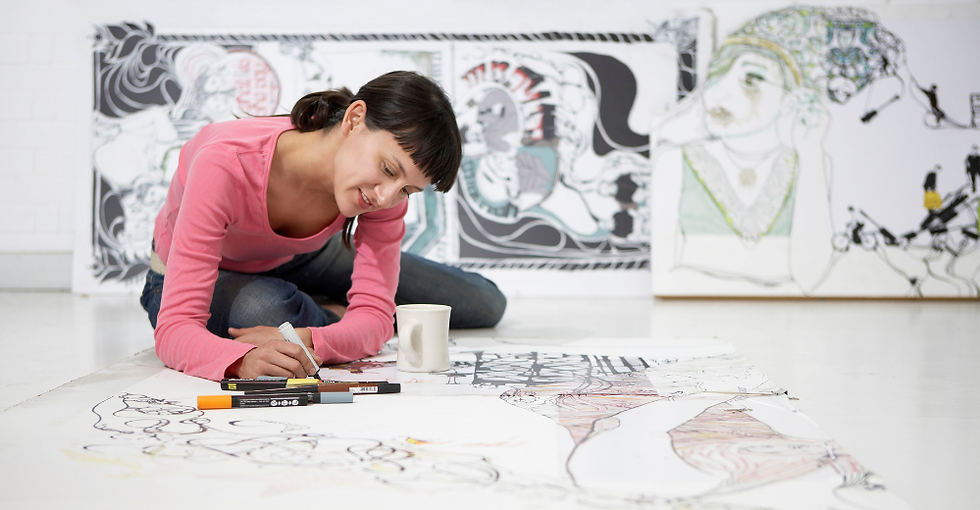Drawing the Body: Life-Size Body Tracing in Art Therapy
- Lauren Fallat, LPC LPAT ATR-BC

- May 22, 2023
- 3 min read
by Lauren Fallat, LPC LPAT ATR-BC
Being aware of one's body and connecting to it have significant benefits for overall well-being, both physically and mentally. Body tracing in art therapy is a technique that involves tracing or outlining the contours of one's body on paper or another artistic medium. This process can have several benefits for enhancing the relationship with one's body and improving self-image.
Developing an awareness of your body allows you to establish a stronger mind-body connection. This means being able to recognize and understand the signals your body sends, such as sensations, emotions, and physical states. By cultivating this connection, you can better respond to your body's needs and promote self-care. Developing a positive relationship with your body can enhance body image and self-acceptance. Being aware of your body's unique characteristics, strengths, and limitations helps you appreciate and respect it. This can contribute to a healthier body image and a more positive self-image overall.
Body tracing in art therapy invites individuals to embody their physical selves in a creative and non-judgmental way. It encourages a focus on the present moment and the physical sensations that arise during the process. This embodiment can promote a deeper connection to the body, fostering acceptance and appreciation for its unique characteristics.
In an art therapy session, the art therapist provides the necessary materials, such as large sheets of paper, pencils, markers, or other drawing tools. The individual is given a space to lie down comfortably on the paper, with enough room for their entire body to be traced. The individual lies down on the paper, and the art therapist assists in tracing the contours of their body if the individual needs assistance. It is also possible that the paper be taped or pinned to the wall and the outline be completed while the individual is standing against the wall. The therapist may use a pencil or marker to carefully trace the outline, ensuring that all parts of the body are captured.
Through the act of tracing, individuals become more aware of their body's shape, size, and proportions. It allows them to visually observe their body as a whole and pay attention to specific areas or features. This increased body awareness can help individuals develop a more accurate perception of their bodies, moving away from negative or distorted self-perceptions.
Once the body outline is complete, the individual is encouraged to express themselves artistically within the traced body. They may use colors, patterns, symbols, or other creative elements to represent their feelings, experiences, or relationship with their body. The therapist may provide prompts or ask questions to guide the individual's artistic exploration.
Artistic expression provides a safe and non-verbal means of communication. Body tracing allows individuals to visually represent their experiences, emotions, and relationships with their bodies. Through the use of colors, shapes, and textures, they can express their feelings and thoughts about their bodies, helping them gain insight and explore their self-image in a more holistic manner.
The therapeutic relationship established in art therapy can facilitate the exploration of body-related issues. Art therapists can guide individuals through discussions, reflections, and interpretations of the body tracing artwork. This process can help individuals gain insights into their body-image concerns, confront underlying emotions, and develop strategies for self-care and self-compassion.
To Schedule an appointment, click on the Book an Appointment button.
To learn more about Holistic Health Counseling Center, please visit out website at www.hhccnj.com To read our latest blog, see this page: https://holistichealthcounselingcenter.com/blog/




Comments